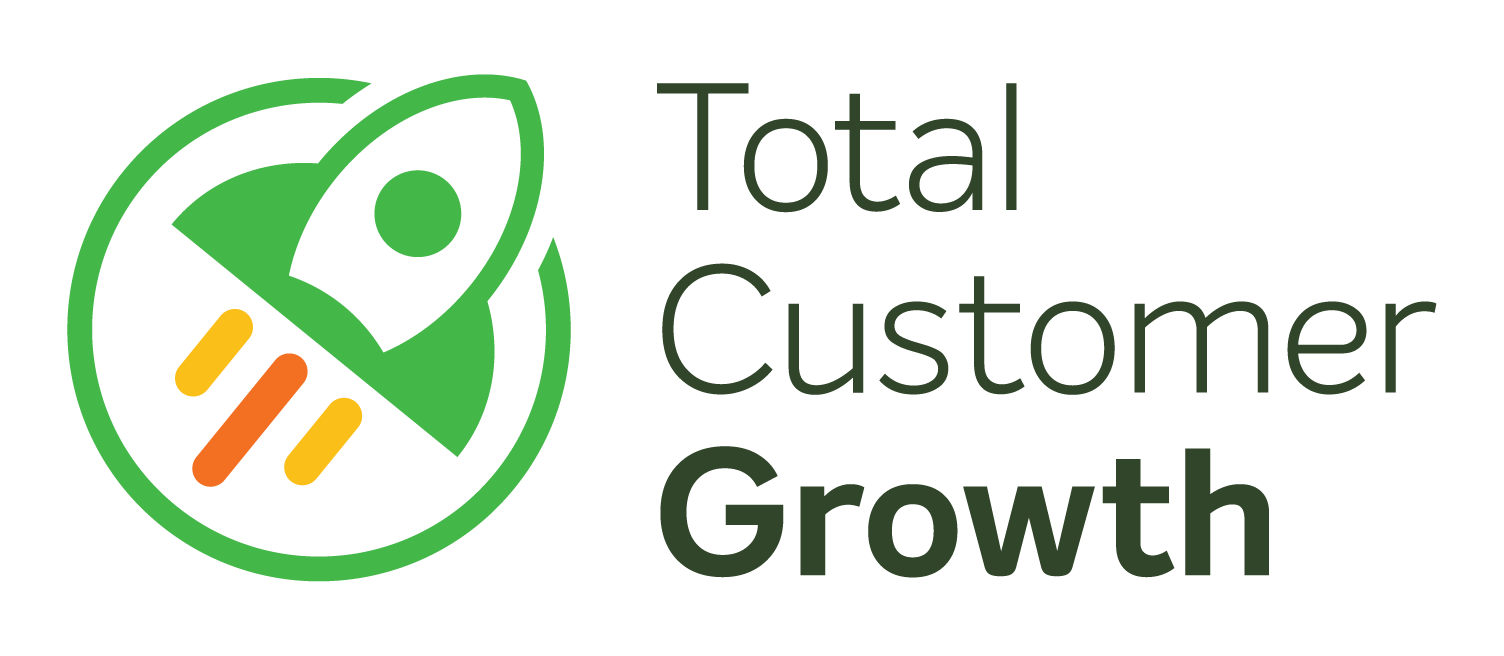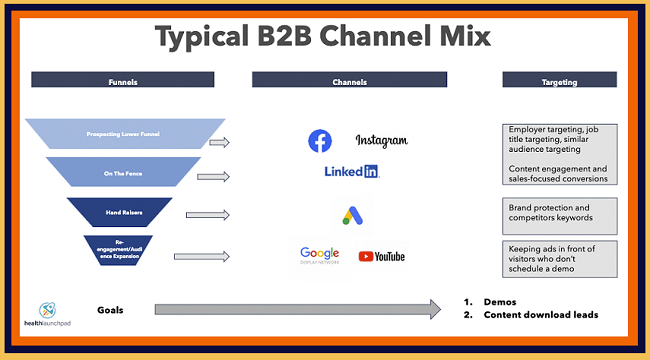
Framework for Digital Marketing to The Healthcare Sector
In this post, you will learn how we approach digital marketing, and specifically, a Framework For Digital Marketing To The Healthcare Sector.
Our partner and colleague, Paul Vandre, Founder & CEO of Cymbal Marketing, discusses his approach to digital marketing that has been honed for B2B Marketing.
The video below this post is a conversation between him and healthlaunchpad CEO, Adam Turinas. In this 15-minute video, Paul dives into the 4 stages of his approach
4 Stages of Framework For Digital Marketing To Healthcare Sector
In the video, Paul provides insights into his key 4 B2B digital marketing stages:
#1 Goal Setting – Focusing on Target Audience
The Digital Marketing Framework starts at the bottom of the funnel and works upwards. The goal is to find the people who are actively in the market.
Acquiring these active buyers is the primary goal. The key questions are where do these in-market prospects go for information? What information are they looking for? What questions do they have?
We then move up the funnel to determine who may be earlier in the buying process. Who is thinking about buying, who may be researching? Again where do they go for information, what information are they looking for, what questions do they have? We then match the audience, channel, and message.
In Paul’s words, ultimately, it then becomes a math problem. in how you plan and acquire these prospects.
#2 Assessing Audience’s Needs – Channels, Audience & Message Analysis
The next step in the process is planning which channels to use and how. In the digital marketing framework above, we focus on determining how to service the audience’s needs and answer their questions at the different stages of the funnel.
At the top of the funnel, the goal is to get them to know you as they most likely are unaware of you at this stage. Facebook, Instagram, and LinkedIn are appropriate for this purpose.
In terms of messaging, it’s more about adding value and creating positive sentiment.
In the mid-funnel, it’s about getting them to consider you when they are actively in the market. The aim is to nurture them to become hand-raisers and get them more actively engaged with you. This is where Adwords and channels like Capterra are a priority.
At the bottom of the funnel, retargeting becomes important as the goal is to capture the attention of prospects who have shown some interest previously but have not put their hand up yet.
#3 Budget Setting – Pilot and Scale
Typically, an initial exploratory budget of $5-$10K is recommended to determine the right message and channel to get generate demand. This is usually the right level to gain insight into what it will take to acquire customers and give you an indicative baseline on acquisition costs.
We then invest in success.
In terms of how much to spend to scale your digital marketing activities, it depends on how many customers are out there.
If the target market has a few hundred companies, then you may only need to spend $5-10K per month. On the other hand, if your market is 100,000+ organizations, you could spend $100s of thousands per month.
The key thing is to spend as much as you can as long as you get a return on your investment.
#4 Dynamic Optimization – Digital Marketing Tracking
One of the great advantages of digital marketing is the ability to track at a micro-level. Google and co’s algorithms allow you to set your campaigns up to optimize dynamically. This uses AI-driven bidding to strategically adjust to what’s working.
If you would like to learn more about digital customer acquisition, let’s book a growth call.
Digital Marketing Framework Video – The Customer Journey
*************
Relevant Links:
- Digital Marketing Channel Planning
- Digital Marketing Optimization – B2B Channel Targeting
- The Marketing Optimization Framework
- Top 25 Digital Marketing Abbreviations
Originally posted on healthlaunchpad.com

